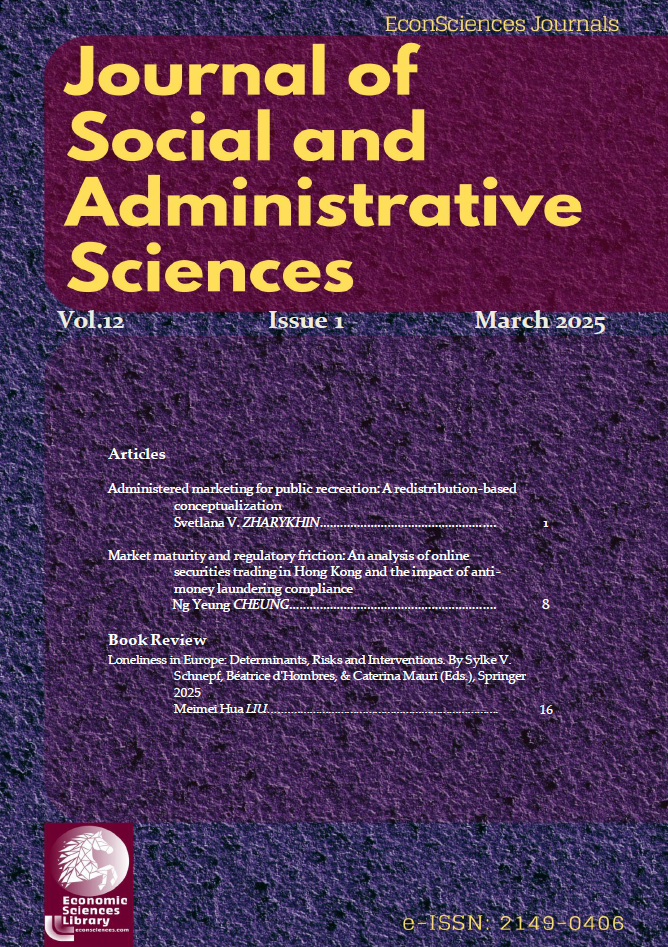Abstract
This study provides an assessment of the online securities trading landscape in Hong Kong, tracing its development from infancy to maturity. The introduction of advanced electronic trading systems, such as the AMS/3.8, significantly enhanced market infrastructure and capacity, facilitating the growth of remote order placement. This technological shift has contributed to a continued upward trend in online trading's contribution to overall market turnover, which reached 29% of online brokers' total turnover value by 2013/14. While the Hong Kong market shows high market acceptance and high penetration rates for online platforms among retail investors (73% of all stock traders in 2014), the industry faces saturation and thinning profit margins due to intense competition and commission deregulation. Crucially, the paper highlights a key regulatory challenge: the divergent compliance standards for client opening procedures, particularly regarding Anti-Money Laundering (AML) requirements, between the U.S. Securities and Exchange Commission and the Hong Kong Securities and Futures Commission. This conflict, combined with the market's maturity and low profitability, is projected to lead to the exit and consolidation of some online brokerage firms operating in Hong Kong.
Keywords. Online Securities Trading; Market Maturity; Anti-Money Laundering (AML); Brokerage Consolidation; Hong Kong Financial Market.
JEL. C38; I19; L52.
References
Cohen, A. (2000). Betting the house? Mutual funds go online in Japan. J@pan Inc., 26-30.
Feng, T. T., Tien, C., Feng, Z. Y., & Lai, P. J. (2014). Web site quality and online trading influences on customer acceptance of securities brokers. Asia Pacific Management Review, 19(1), 25–45. https://doi.org/10.6126/APMR.2014.19.1.02
Hong Kong Exchange and Clearing Limited. (2015a). HKEx Retail Investor Survey 2014. Research and Policy.
Hong Kong Exchange and Clearing Limited. (2015b). Cash Market Transaction Survey 2013/14.
Klein, C. J., Malik, N., & Warren, D. (2000). Beyond day trading. The McKinsey Quarterly, (3), 34–41.
Konana, P., Menon, N. M., & Balasubramanian, S. (2000). The implications of online investing. Communications of the ACM, 43(1), 35–41. https://doi.org/10.1145/328229.328243
Mandocdoc, D. K. C. (2013). A complement to the technological change in the exchange: Distressed securities market participants and investor protection. Ateneo Law Journal, 57, 1202–1218.
Montazemi, A. R., Siam, J. J., & Esfahanipour, A. (2008). Effect of network relations on the adoption of electronic trading systems. Journal of Management Information Systems, 25(1), 233–266. https://doi.org/10.2753/MIS0742-1222250109
Ody, E. (2011). The best of the online brokers. Kiplinger’s Personal Finance, 34–37.
Rossignoli, C., Zardini, A., & Cantoni, F. (2013). When customer behaviours change, should banks’ approaches to online trading stay the same? Journal of Internet Banking and Commerce, 18(2), 2–16.
Securities and Futures Commission. (2013). CIS Internet Guidance Note: Guidance Note for Persons Advertising or Offering Collective Investment Schemes on the Internet (2nd ed.).
Srivastava, S. (2011). Impact of internet growth on the online stock trading in India. Journal of Internet Banking and Commerce, 6(3), 1–10.
Teo, T. S. H., Tan, M., & Peck, S. N. (2004). Adopters and non-adopters of internet stock trading in Singapore. Behaviour & Information Technology, 23(3), 211–223. https://doi.org/10.1080/01449290410001685402
Yang, Z., & Fang, X. (2004). Online service quality dimensions and their relationships with satisfaction: A content analysis of customer reviews of securities brokerage services. International Journal of Service Industry Management, 15(3), 302–326. https://doi.org/10.1108/09564230410540953

This work is licensed under a Creative Commons Attribution-NonCommercial 4.0 International License.
